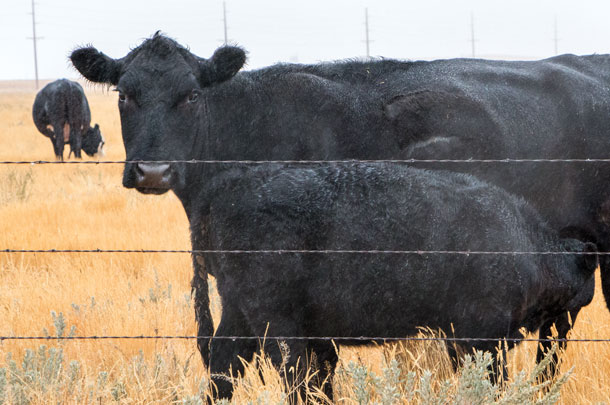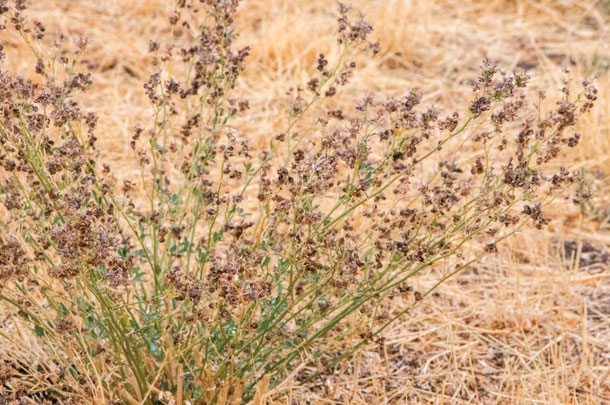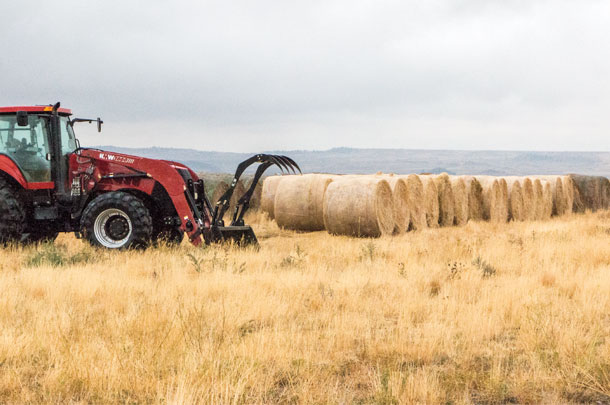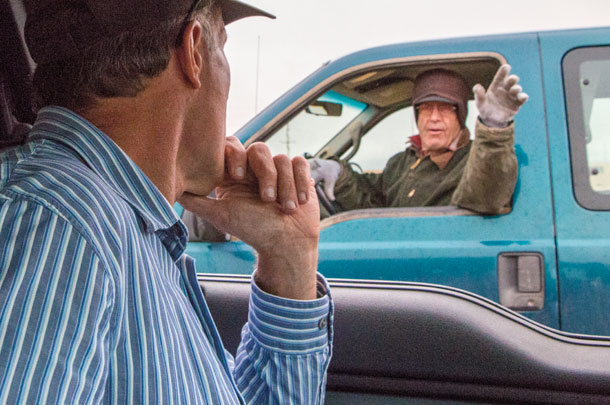That was the question Ned Anthony Tranel, fresh out of Gonzaga University with a degree in political science and business management, and wondering what he’d do with the rest of his life, asked some farmers north of Billings, Montana, about their unused acres. “They thought I was crazy,” Tranel says, “and maybe I was.”
Crazy or not, he got a few farmers to bite. Tranel put in the fence, turned out his 50 cows, and he was in business – without big capital investment or borrowed money. Thus began a series of land leases leading to purchases, and more leases and more purchases. Fast-forward 30 years, and Tranel now runs 3,800 cow-calf pairs and 1,000 yearling heifers on 60,000 acres across seven counties.
Finding the water
Wait, wait – back up. That sounds easier than it was. In 1988, Tranel found 10,000 acres for lease on the edge of Musselshell and Petroleum counties. It was seeded entirely in native grass. It’s pure cow country. While many acres since then have been seeded to crested wheatgrass and dryland alfalfa, the native rangeland is still impressive for its ability to produce even during droughts and other extreme weather.
But even cow country needs help. In the West, that usually means water development. Developing wells and pipelines has been the most dramatic improvement in grazing anywhere in the West. Tranel drills one or two new wells a year, most 150 to 200 feet deep.
Many run 20 to 80 gallons per minute on propane generators. The pipeline from one well runs 4 miles one way and 6 miles the other direction. Water development has taken expanses of unusable land and made it a grazing mecca.
Except, of course, during drought and wildfire. Montana experienced both in 2017. The last spring rain was during early branding season and didn’t appear again until Sept. 14 in Tranel’s range. In addition, wildfires burned across a million acres of Montana’s drought-stricken grasslands. As a result, CRP land was opened for emergency grazing.
Don’t make the mistake of transferring Eastern or Midwestern grazing management to Tranel’s country. Unlike areas of the U.S. where rainfall is 30 to 50 inches per year, and stocking rates are high and rotations range from once a day to a few times per week, one of Tranel’s pastures alone is 11,000 acres stocked with 700 cows (35 acres average to the animal unit month).
Yet the location of the ranch, according to Tranel, is one of its best assets. “We’re within 60 miles of Billings – close enough to recruit good help, and employees need to be within an hour or so from schools and doctors,” he says. “We have good county roads, water resources, good people and hard work. It’s a sustainable setup.”
Cow management
Tranel groups cows by age and by sex of the calves they’re carrying. He ultrasounds cows for pregnancy and to determine calf sex. By grouping cows by age, he can manage forage nutrition accordingly. By grouping them further by the sex of the calf they’re carrying, he keeps bull calves in one group for marketing and heifers in another, minimizing sorting and working stress.
Tranel says, “Once a calf hits the ground, it has a compressed time to perform, and this maximizes performance. By weaning steers on the truck, you don’t have to transport them back to the ranch to work them or truck them out,” and they can be managed on better forage areas.
Calves are weaned in October and early November, and will weigh 500 to 550 pounds. Older cows (10 years plus) can be kept on more level ground in the Little Snowies foothills near the home ranch so they don’t have to travel far or be transported. The older cows are further sorted by calf sex, as are the other herds.

Three years ago, Tranel started using A.I. in an effort to raise conception rates. It’s paid off. He uses MGA (melengestrol acetate feed additive for increased weight gain, improved feed efficiency and suppression of estrus in heifers) and a Lutalyse shot to sync esterase in cows. He’ll also buy 30 to 40 bulls a year from Stevenson’s Angus in Hobson, Montana, carrying the Diamond Dot line, selecting bulls by walking the pens and using expected progeny differences.
“With A.I.,” Tranel says, “we get uniformity and virtually no calving problems.” And it did, indeed, improve conception rates. All calves are part of the AngusSource Program (a program verifying a minimum of 50 percent Angus genetics, source-verified and age-verified), which Tranel has used for 15 years. “You never know,” he says. “I want to be ready to use any advantage in the marketplace.”
All hands on deck
Ten cowboys – make that “employees” – round out the crew. Tranel says, “I don’t hire cowboys. I look for people with specific skills – mechanics, someone who can run a backhoe, a tractor, someone who can weld to improve tanks and barricades.” Even if they are cowboys, they aren’t riding horses. Tranel converted horses to ATVs 10 years ago and says, “We have a couple horses, but they’re getting old and fat.”
In addition to the employees, Tranel’s wife, Dana, is “all in” on the ranch and helps, as do their five children.
And it’s “all hands on deck” during haying. They put up 3,000 to 5,000 round bales per year of crested wheat and dryland alfalfa. There is some irrigated alfalfa, and Tranel seeds about 1,000 acres every year to some type of carryover feed. In 2017, he tried a forage pea/oat blend. With the drought, it didn’t yield well, but he’ll try it again.

Although the ranch gets a fair bit of snow, not every animal is fed every day during winter. “The snow blows a lot, and it makes a lot of clean ground where cows can still graze. We also use straw bales for ‘edible windbreaks’ and feed straw with hay during winter,” Tranel says. His range is large enough that, although there might be snow minimizing grazing in one area, there are areas where snow doesn’t accumulate as readily.

One of the reasons Tranel gives for his success is: No one told him he couldn’t do it. Tranel was the fourth of 10 children, born to Virginia and Ned Sr. His father was a psychologist by profession. His parents moved the family to an acreage near Billings when Tranel was in eighth grade to continue raising the kids in a rural setting.
Tranel says, “We had a couple of dairy cows, pigs, horses and beef cattle from as far back as I can remember.” Tranel says he always loved the outdoors and animals, and says his father “taught me optimism.” Tranel says being the middle of 10 kids also “maybe helped me learn how to negotiate and how to ‘roll with it.’”
Another credit to his father, Tranel says, is: “He was a great listener. I think I have a sense of people, perhaps learned from him. I’ve been loyal to the people who work for me and who I do business with.” Tranel works with many, many leaseholders and says that learned skill has perhaps helped in those relationships.

When your range is hit with drought and wildfire in the same year, it also helps to be “easygoing” and roll through crises. “It’s like that poem,” Tranel says, quoting from Rudyard Kipling’s poem If, “If you can meet with Triumph and Disaster, And treat those two impostors just the same … ” He continues, “And it’s true – they’re both impostors. They both upset the flow. I just try to focus and know my strengths and weaknesses and ‘play my own game.’”
“He adds, “It’s my good fortune I’ve been able to make a living doing what I enjoy. Maybe that’s the secret.” And maybe that crazy idea of fencing unused land many years ago wasn’t so crazy after all. ![]()
PHOTO 1: Tranel uses straw bales for “edible windbreaks” and feeds straw with hay during winter when snow covers native standing feed.
PHOTO 2: Older cows (10 years plus) are kept on more level pastures in the Little Snowies foothills near the home ranch, proving easier on the cows and less transport required.
PHOTO 3: Dryland alfalfa is seeded with crested wheat over much of the range, offering cattle a higher-protein diet.
PHOTO 4: Tranel bales 3,000 to 5,000 round bales per year of crested wheat and dryland alfalfa, then stages it for winter feeding.
PHOTO 5: An employee checks in with Ned Tranel during the first rain after a several-month drought. Photos by Lynn Jaynes.

-
Lynn Jaynes
- Editor
- Progressive Cattleman
- Email Lynn Jaynes






